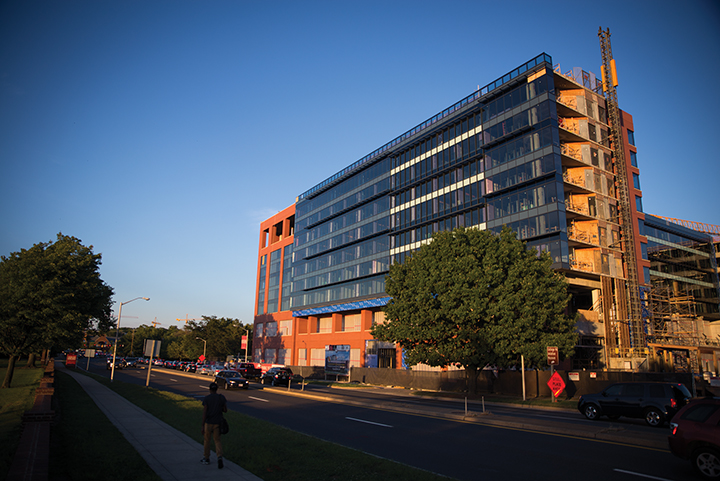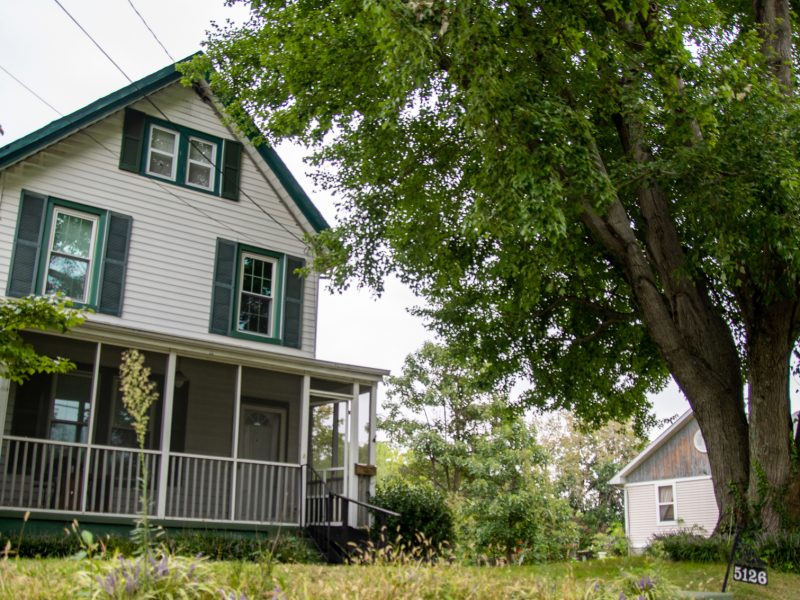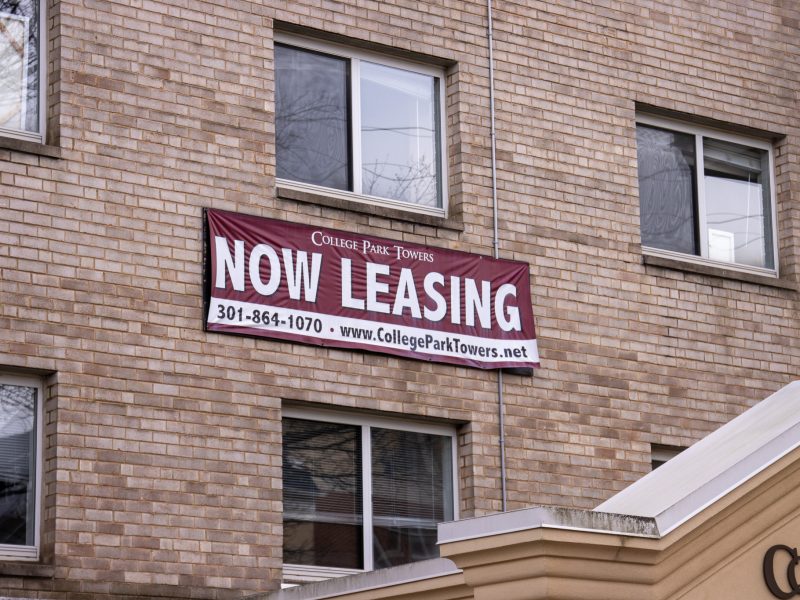By Carly Kempler and Alex Carolan
Senior staff writers
Since moving to College Park more than 40 years ago, Carol Macknis said the town she knew for many years has entirely transformed.
And though the 70-year-old District 1 resident said the city’s neighborhoods have “kind of stayed the same,” the increased amount of development and heavy traffic flow are concerning to her and her neighbors.
“When I see people who had come to College Park 15 to 20 years ago, I ask them [if] they had been to College Park recently, and they say ‘No.’ I say ‘You are in for a major surprise,’ because of all the construction,” Macknis said. “Sometimes I feel there’s a little bit too much construction.”
College Park’s population is made up of roughly 70 percent students and 30 percent long-term residents, said Mayor Patrick Wojahn. As the city, university and student population continue to grow, some residents said they fear the city’s rich history will be lost.
[Read more: A College Park-UMD partnership is offering tax credits for homeownership program donations]
The high-profile openings of MilkBoy ArtHouse in May and The Hotel at the University of Maryland, scheduled to open sometime in July, are visible markers of the Greater College Park initiative — a partnership between various stakeholders including the city, Prince George’s County and the state of Maryland.
Some College Park residents, specifically in the northern areas of the city, said they feel left out as development surges downtown, while strip centers and sidewalks remain dilapidated in their regions.
“All of that development [downtown] is really good,” said 41-year-old Emily Larkin, who has lived in the city for more than four years. “I’d like to see a little bit of development aimed more at the town, [rather] than just the students, and we’ve got a couple of little strip malls up here … I’d just like to see that particular commercial area get a little bit more dressed up and a little shinier.”
The overwhelming majority of the new developments, restaurants and shops popping up in College Park are located in Districts 2 and 3.
Meanwhile, the greatest concentration of long-term residents live in North College Park, which is made up primarily of Districts 1 and 4. However, the vacancy rate is 14.3 percent in District 1 and 9.9 percent in District 4.
The city’s overall vacancy rate of 7.6 percent, said Ryan Chelton, the city’s economic development coordinator.
District 4 Councilwoman Mary Cook questioned if the increased collaboration and overall developments are beneficial for the city holistically, specifically to areas north of Route 193.
Oscar Gregory, a 10-year resident of District 4, said residents are speaking up and council members are “opening their eyes to what the residents have been talking about for a while.”
The 62-year-old referenced the council’s recent vote to fund the IFC PHA tailgate, and said “those kinds of things, that kind of narrative, I’m telling you if you want to divide the community, that’s exactly what’s being done.”
[Read more: College Park Foundation and partners to redevelop southern entrance to city]
Similar concerns and a general sense of separation have spilled over into the city council when certain agenda items concerning development are voted on or discussed.
“Oh it’s very divided — it’s District 1 and District 4, and then District 2 and 3 take another viewpoint on many things, and then of course the mayor breaks the tie,” Cook said, noting that some older residents may not take advantage of downtown amenities.
District 2 Councilman P.J. Brennan said that while some of the “high profile votes,” such as contributing to the IFC PHA Tailgate, get council members riled up, “we are fairly unanimous in our support for a lot of the actions that the city is taking.”
Revitalization of other areas
The city is exploring other ways to spruce up the northern areas of the city, such as the Hollywood Streetscape project, which was formed in 2014 to revitalize Hollywood’s Commercial District by improving sidewalks and street lighting, as well as adding a wellness circuit.
During a May 2 work session, the city council decided to wait before proceeding on this project, in order to get more community feedback.
Some residents of North College Park said they would also like to see revitalization of the current businesses and vacancies in the area’s various strip centers, but the council only has so much authority over what moves into the city, said Terry Schum, the city’s planning director.
The city owns and controls four major properties in the city: City Hall, the Youth and Family Services building, Davis Hall and its adjoining Department of Public Works Yard and the Calvert Road School, Schum said.
Negotiations over all other properties are between the landowners and the potential developers, Schum said. In these cases, the council can provide comments, but as long as the development complies with zoning, which is controlled by the county, Schum said, there’s not much the city can do to oppose it.
In 2010, a zoning change was proposed for the Hollywood Commercial District, Schum said, but without community support, it did not pass. Thus North College Park has stricter zoning requirements than downtown, making redevelopment near there less feasible.
Impact of University-City Collaboration
When university President Wallace Loh assumed his position in 2010, College Park and this university entered into a phase of unprecedented collaboration.
This partnership has catalyzed the revitalization of the city’s downtown, yet both the residents and city council members have hesitations about the urbanization, especially as northern residents said parking and traffic inhibit them from using these new amenities.
Route 1 has become a parking lot, said Judy Blumenthal, who’s been resident of District 1 for more than 20 years.
“There was always traffic, but you never had to work your schedule around the traffic, now you do,” Blumenthal said.
However, 71-year-old Adele Ellis, who moved to College Park more than 30 years ago, said “you can’t turn back the clock,” and these developments show progress. Ellis said she’s in favor of the downtown developments, which are within walking distance of her home, but she cautioned over-developing the area.
“There’s a real fine line between wanting to have amenities and wanting to live downtown,” said Ellis, a District 3 resident. “A lot of people moved here because they didn’t want to live downtown. They moved here because it was a quiet college town, but at the same time, it didn’t have a lot of things that would make life easier and/or exciting.”
John Rigg, 41, president of the Calvert Hills Civic Association in District 3, said he’s concerned there’s a possibility this university could assume too much control in the relationship.
Though Rigg, a 10-year resident, said he supports the collaboration overall. “I don’t accept everything that is put before [the city] as a university priority [is] something we should automatically support,” he said.
University officials declined to comment.
Macknis said a partnership between the two entities is valuable, but the city must retain its history.
“I appreciate having the university here, but … College Park has more than just the University of Maryland,” Macknis said. “I think that is lost not only by the virtue of having the University of Maryland here, but I think the city council, or the government there, tends to focus a lot with the university.”
Rose Greene Colby, a 20-year District 2 resident, said she sees these developments as moving more toward a “balance” between serving resident and student needs.
“I know a lot of folks who live in the corridor and these neighborhoods will look forward to going [downtown],” said Greene Colby, 50. “While maybe five years ago it seemed like we were just getting more pizza joints and more Chinese food restaurants, and there wasn’t a mix of opportunities or a mix of amenities for everyone to enjoy.”
Blumenthal, who said she has no resentment toward the increased amenities downtown, cautioned that College Park is not meant to be “contained.” Being located on the main artery of Route 1, she said she fears both the city’s residents and commuters will be affected by potential over-development for the area.
“What my analogy is, [is] that if a 75-pound 4-foot person [were] playing professional football,” Blumenthal said, “we’re that 75-pound, 4-foot person; we’re going to get crushed.”



